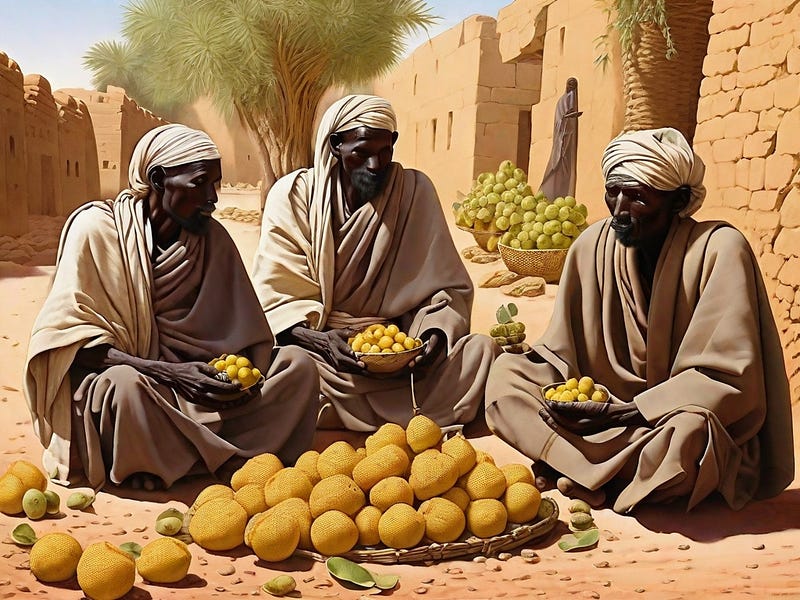Medieval Monks in Sudan: A Closer Look at Their Lives and Diet
Written on
Chapter 1: The Diet of Medieval Monks
In medieval Sudan, monks enjoyed a diet rich in fresh produce and meats, which stood in stark contrast to the fare of the secular population. Despite the expected asceticism of their lifestyle, these Christian clergy experienced a higher standard of living.

The insights into this disparity come from Ghazali, a remarkably preserved monastic site in the Bayuda Desert, located about 20 km from present-day Karima. Between 2012 and 2018, Sudanese archaeologists conducted extensive research on this Christian monastery, dating back to between the 7th and 13th centuries, alongside four burial sites. The results of their examinations of the remains have provided a deeper understanding of life in Ghazali.
Section 1.1: Insights from Interdisciplinary Research
The research conducted at Ghazali involved international collaboration, including isotopic analyses by experts from the Max Planck Institute. DNA studies of several monks' remains were led by Dr. Robert Stark, contributing to our understanding of their origins, dietary habits, and health conditions in contrast to the secular community.
Subsection 1.1.1: A Comparative Analysis of Diets
Isotopic analysis indicated that monks had access to a much wider variety of foods compared to the secular population, whose diet primarily consisted of affordable grains like millet and sorghum. In stark contrast, the monks enjoyed a broader range of foods, including wheat, fresh fruits, and vegetables. Interestingly, these studies revealed that monks consumed meat more regularly than their secular peers, contradicting the ascetic expectations of the time.
Section 1.2: Environmental Factors and Access to Resources
Historical climate conditions were notably more favorable in this region about a millennium ago, which likely contributed to greater food availability. Large-scale grazing of cattle, alongside the presence of goats and sheep, supported a more diverse diet for those of higher social standing, including the monks.

Despite the assumption of a restricted diet, it appears that meat was not an everyday staple, though it was more frequently included in the meals of those with elevated social status.
Chapter 2: Health and Mobility of the Monastic Community
Research indicates that neither the monks nor the laypeople from Ghazali exhibited signs of malnutrition-related ailments. The monks, in particular, were found to have access to a diverse and nutrient-dense diet, as shown by the thorough examination conducted on their remains.
Furthermore, isotopic evidence suggests that many monks may have traveled from distant regions to join the monastery. The monasteries in medieval Nubia were well-known, attracting individuals from hundreds or even thousands of kilometers away, which could also apply to the community at Ghazali.
Archaeological endeavors in Sudan have made significant strides. In early 2023, researchers announced the discovery of sandstone blocks from a Pharaonic temple in Old Dongola, dating back to the first half of the first millennium BCE. This remarkable find may push the timeline of the city’s history back by a millennium.
Attention All Readers!
As content creators on Medium.com, we receive minimal compensation for our efforts. If you appreciate my work, please consider supporting me on my “Buy Me a Coffee” page. Your small contributions can significantly impact my ability to produce quality content. Thank you for your support!

